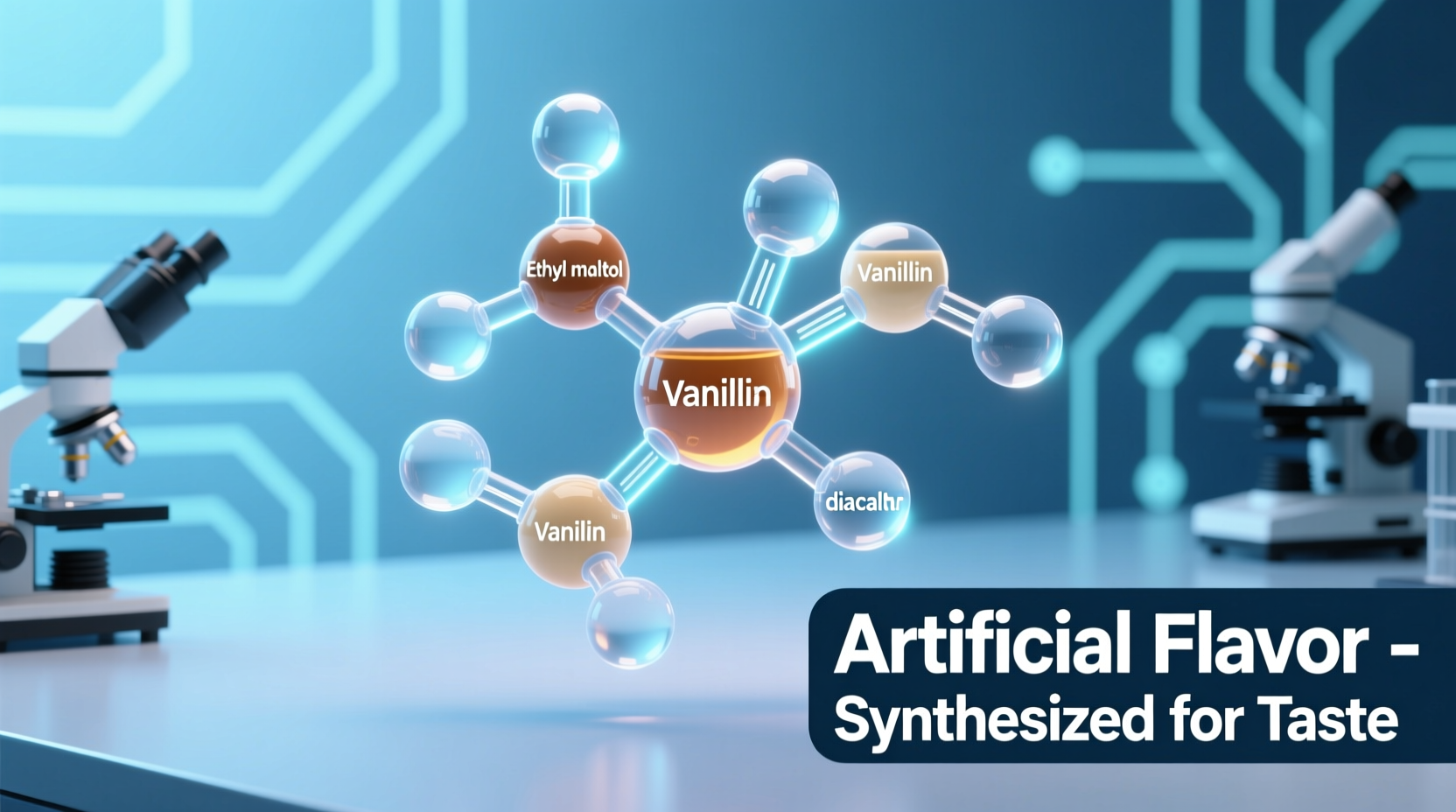Artificial flavors are laboratory-created chemical compounds designed to mimic natural tastes, made from non-natural sources through precise chemical synthesis. Unlike natural flavors derived from plant or animal materials, artificial flavors are built molecule-by-molecule to replicate specific taste profiles, with over 2,000 FDA-approved options used safely in foods since the 1960s.
Ever wondered why your strawberry yogurt tastes intensely fruity despite containing no actual strawberries? The answer lies in flavor science. Understanding artificial flavors empowers you to make informed choices about what you consume while appreciating the sophisticated chemistry behind everyday foods.
The Science Behind Artificial Flavor Creation
Food chemists don't simply guess at flavor formulas—they reverse-engineer nature's blueprint. When creating an artificial strawberry flavor, scientists first analyze the chemical composition of real strawberries, identifying the key compounds responsible for its distinctive taste. They then synthesize identical or similar molecules in the laboratory using petroleum derivatives or other non-fruit sources.
The Flavor and Extract Manufacturers Association (FEMA) confirms that artificial flavors contain specific, well-defined chemical structures, whereas natural flavors can include dozens of compounds in varying proportions. This precision allows food manufacturers to achieve consistent taste profiles regardless of seasonal variations in natural ingredients.
Natural vs. Artificial: Understanding the Critical Differences
Despite common misconceptions, the chemical structures of natural and artificial flavors are often identical. The key distinction lies in their origin, not their molecular composition. Consider this comparison:
| Characteristic | Natural Flavors | Artificial Flavors |
|---|---|---|
| Source Materials | Plant/animal derivatives (fruits, spices, dairy) | Petroleum, coal tar, or other non-food sources |
| Chemical Complexity | Multiple compounds (40+ for vanilla) | Single or few defined compounds (vanillin) |
| Production Process | Extraction, distillation, fermentation | Chemical synthesis in controlled environments |
| Cost & Consistency | Higher cost, seasonal variation | Lower cost, consistent year-round |
For example, both natural and artificial vanilla flavor contain vanillin as the primary compound. Natural vanilla extract requires curing vanilla beans, yielding about 2% vanillin, while artificial vanillin is synthesized from guaiacol or lignin. The resulting molecule is chemically identical, but the production pathways differ significantly.

Regulatory Timeline: How Flavor Safety Standards Evolved
Understanding the historical context of flavor regulation reveals why today's artificial flavors undergo rigorous safety testing:
- 1958: Federal Food, Drug, and Cosmetic Act established the "Generally Recognized as Safe" (GRAS) designation
- 1960s: Flavor industry formed FEMA's GRAS program for independent safety review
- 1999: FDA implemented stricter documentation requirements for flavor ingredients
- 2018: FDA updated guidance on flavor ingredient safety assessments
- Present: Over 2,000 flavoring substances evaluated through FEMA's independent expert panel
The FDA's Center for Food Safety and Applied Nutrition maintains strict oversight, requiring comprehensive toxicology studies before approving any new artificial flavor. Each substance undergoes evaluation for potential carcinogenicity, reproductive effects, and metabolic impact at doses far exceeding typical consumption levels.
Addressing Common Safety Concerns
Many consumers worry about artificial flavors' health impacts, but scientific consensus from major health organizations provides clarity. The European Food Safety Authority (EFSA) and FDA have both confirmed that approved artificial flavors pose no significant health risks when consumed within established limits.
For perspective, the average person would need to consume over 1,000 times the typical daily amount of most artificial flavors to reach potentially harmful levels. The American Chemical Society notes that many artificial flavors break down into harmless compounds during digestion, similar to natural flavor components.
While some individuals may experience sensitivities to specific compounds, these reactions are rare and typically mild. The misconception that artificial flavors cause widespread health problems stems from confusion with other food additives like artificial colors or preservatives.
Practical Guidance for Informed Food Choices
Reading ingredient labels effectively helps you understand what you're consuming. When you see "artificial flavor" on a label, it refers to any flavoring substance not derived from natural sources. Manufacturers aren't required to specify the exact compounds used, but they must comply with FDA safety standards.
Consider these practical tips when evaluating products:
- Look for specific flavor names ("artificial strawberry flavor") rather than generic "artificial flavor" for more transparency
- Understand that "natural and artificial flavors" on a label means both types are present
- Recognize that organic products cannot contain artificial flavors by certification standards
- Consider that artificial flavors often enable lower-cost products, making certain foods more accessible
For those seeking to minimize artificial flavors, focus on whole, unprocessed foods where flavor comes directly from ingredients rather than added compounds. However, for most consumers, artificial flavors represent a safe, cost-effective way to enjoy consistent taste experiences across a wide range of products.
Conclusion: Balancing Science and Consumer Choice
Artificial flavors represent a triumph of food science, allowing us to enjoy consistent, affordable taste experiences while meeting strict safety standards. The key is understanding that "artificial" doesn't equate to "unsafe"—these compounds undergo more rigorous testing than many natural substances.
As food technology continues evolving, we're seeing increased interest in "nature-identical" flavors—synthetic compounds that match natural molecules exactly. This emerging category bridges the gap between natural and artificial, offering consistent quality with molecular precision. Regardless of your personal preference, being informed about what artificial flavors really are helps you make conscious choices that align with your dietary priorities.











 浙公网安备
33010002000092号
浙公网安备
33010002000092号 浙B2-20120091-4
浙B2-20120091-4